It seemed like more of a photo op than anything – Russian President Putin was playing professor, seated on a white armchair, responding to questions from a group of several dozen young Russians as part of a special event held in Moscow’s Museum of the Great Patriotic War.
That’s when Putin decided to drop a tidbit that has sparked furore in France ever since: he said that there were French soldiers fighting alongside the Russian Army in Ukraine.
Putin said that the French fighters were part of a unit named “Normandie-Niemen" after their “grandfathers”.
It's a name that carries a lot of weight. “Normandie-Niemen” was a French military unit made up of fighters from General Charles De Gaulle’s Free French forces, created in 1942 to fight alongside the Red Army on the Eastern front.
The Russian president’s assertion prompted an impassioned reaction in France, which has publicly supported Ukraine since the full-scale Russian invasion began in 2022.
French media outlets scrambled to find out more about the Normandie-Niemen unit and its French fighters. French daily Le Figaro quoted figures from a report broadcast on Russian public television, claiming that about 30 French people had joined the unit since the start of the conflict. In the columns of the French daily Le Parisien, one analyst said there were likely a dozen French fighters, while others said there were likely "fifty or just under a hundred”.
However, our investigation shows that there are actually just three French citizens in the new Normandie-Niemen unit.
A former Wagner employee with links to the Russian military
The man at the heart of the unit is Sergei Munier, a Franco-Ukrainian who has a big media presence and is well-known to observers of the conflict. Born in Luhansk, Munier served as an army reservist in France in the early 2010s. In 2014, he joined pro-Russian separatists fighting in the Donbas region. Returning to France, he appeared at a gala dinner in November 2016 for a group called "Franco-Russian dialogue" run by the conservative deputy Thierry Mariani. In 2019, Munier popped up again, this time taking part in France's Yellow Vest protests.
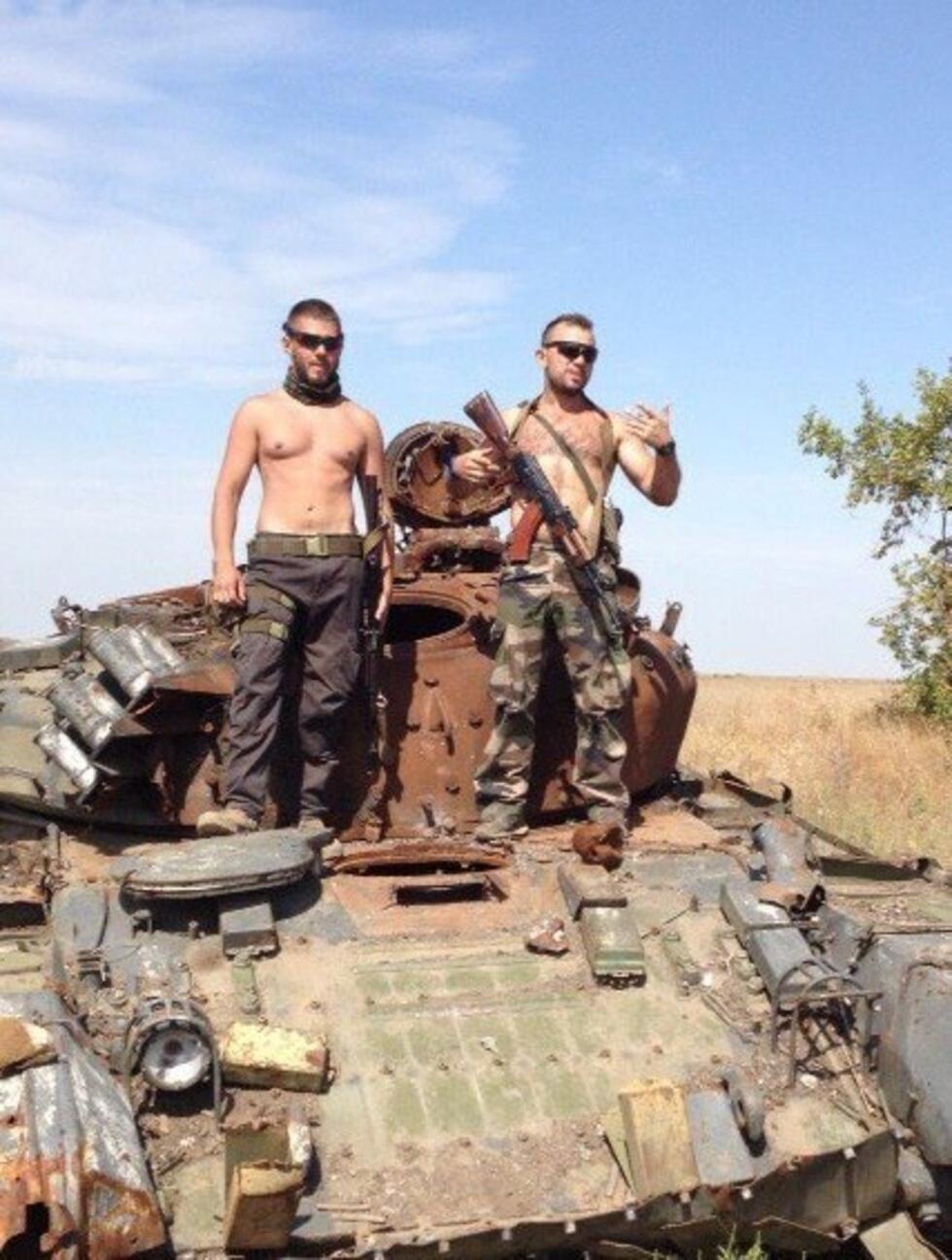

In 2022, when Russia launched its full-scale invasion of Ukraine, Munier picked up his weapons again and began to document his daily life on social media. Munier posts relentlessly, showing everything from bodies in the streets of Mariupol to videos of himself driving an armoured vehicle in Donetsk. In early 2023, French journalist Nicolas Quénel reported that the images that Munier had posted were proof that he was part of the Russian private military company Wagner.
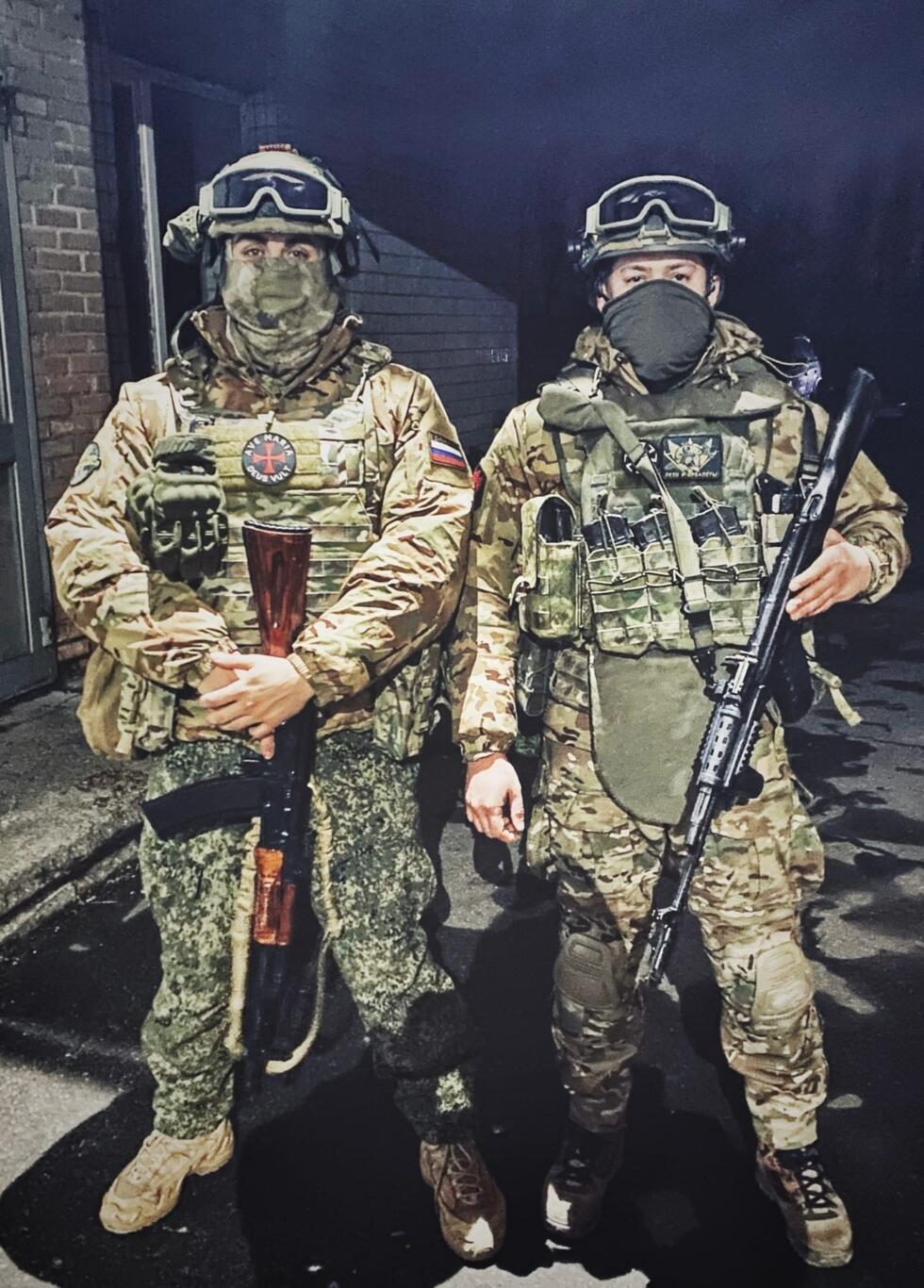
In 2023, Munier posted an image of himself in the "Borz" unit, run by the private military company Redut, which is controlled by Russian military intelligence services. In April 2024, he announced that the Normandie-Niemen had been created.
Our team contacted Munier as part of this investigation, and we exchanged some messages. However, when we started asking more about his career and the Normandie-Niemen unit, he stopped responding.
The French Armed Forces Ministry didn’t respond to our questions about Munier’s career as an army reservist.
The fight against ‘degenerate Western ideas’
Aside from Munier, there are only two French fighters who seem to be active in the Normandie-Niemen unit, a year after it was created. In the unit’s media communications, they are nicknamed "Gauthier" and "Padre".
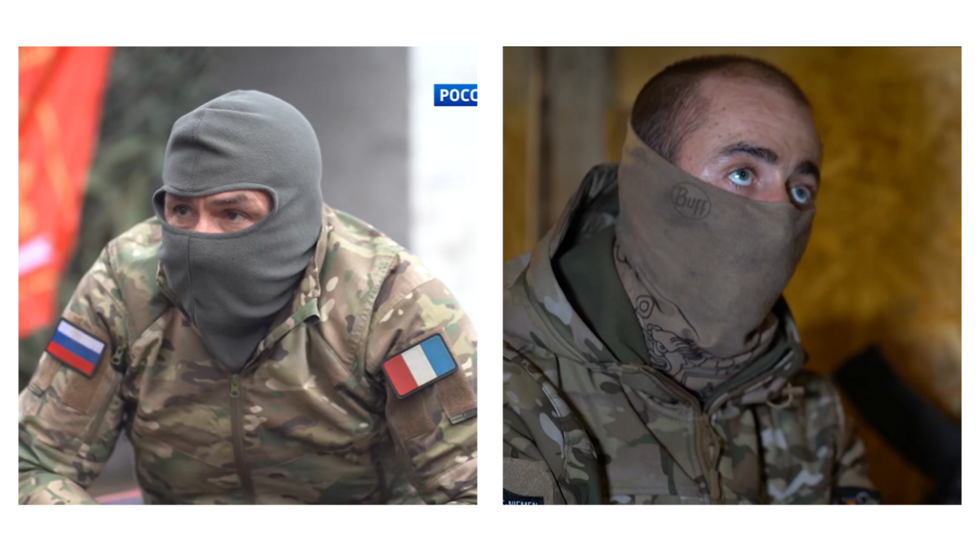
In a report on the unit broadcast by Russian state channel Rossiya 1 last April, "Padre" said that he was a former instructor with the French foreign legion and that he wanted to move to Russia to build a “normal Christian family.”
"Gauthier", who arrived in Russia shortly before the report was filmed, says that he was a career soldier in France and once served as a bodyguard to Jean-Marie Le Pen – he even showed a blurred photo to prove it. He said that he came to Russia because he wanted to fight against "degenerate Western ideas" like wokism, an the LGBT community. He added that he would be able to kill a fellow French person if they were on the opposite side of the frontline.
Our team contacted the French Armed Forces Ministry to find out more about the careers of "Padre", "Gauthier" and Munier. The ministry said that “these people are no longer part of the French armed forces” and thus it was unable to provide more information.
The Foreign Legion didn’t respond to our questions about the three soldiers.
To try to establish if "Gauthier" really had worked as Jean-Marie Le Pen’s bodyguard, we spoke to two of Le Pen’s biographers as well as a journalist who covered the French extreme right. None of them recognised him.
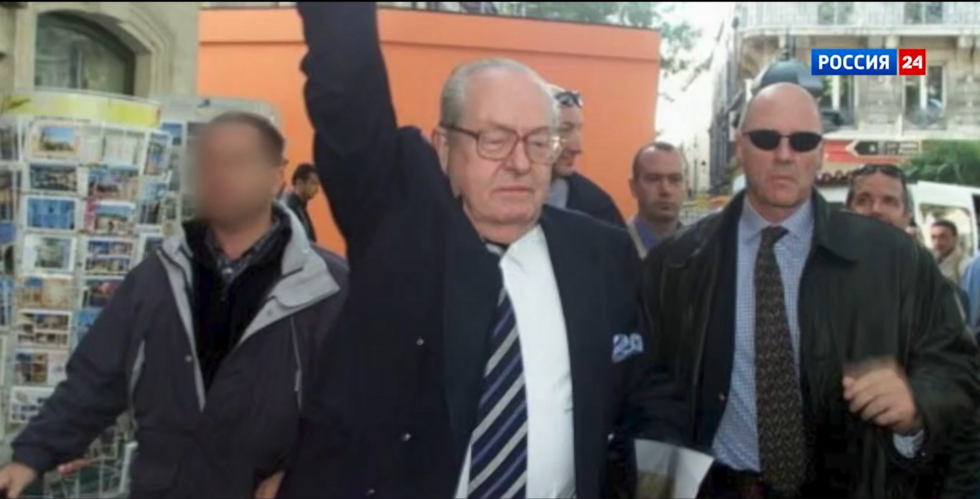
Aside from "Padre" and "Gauthier", there has been no mention of other French members of the unit. These two recruits have appeared in every photo and video posted on the unit’s Telegram channel. Some posts show them on the frontlines. Others show them taking part in the May 9 festivities, when Russia celebrates the Nazi surrender at the end of World War II.
Munier himself was evasive when he was asked in the Rossiya 1 report how many French soldiers were part of the unit. The presenter of the report claimed that "around 30 French citizens have at various times served with the Normandie-Niemen small drone detachment", but Munier said that he couldn’t give a precise number although he thought there were "not more than a dozen.”
To display this content from , you must enable advertisement tracking and audience measurement.
French fighters for Russia 'disproportionate' to French volunteers for Ukraine
Quénel, a journalist who specialises in intelligence, admits that “despite the relative renown of the [Normandie-Niéman] unit”, it's "difficult to count the number of French people serving" in it.
He says that the number of French people fighting alongside Russia is “clearly, less than 20”. Many, he says, are dual nationals or volunteers who have been fighting since 2014 in Donbas.
He says this is “totally disproportionate” to the number of French volunteers fighting on the Ukrainian side. In June 2023, French daily Le Monde estimated that there were nearly 300.
Other investigations have also shown similarly small numbers of French fighters on the Russian side. In April 2025, Russian investigative media outlet Important Stories published a breakdown of the numbers of foreign mercenaries fighting on the Russian side in Ukraine. It's report, which drew its information from leaked medical documents from the city of Moscow, identified nearly 1,500 foreign mercenaries who had been processed through a Moscow recruitment centre when they joined the conflict between April 2023 and May 2024. Of those, only two were French – a far smaller number than the 603 Nepali mercenaries or the 51 Chinese mercenaries.
Kremlin’s rhetoric
Whatever the number of Frenchmen actually serving in the Franco-Russian unit, it seems as if one of the principal aims is to publicise their involvement. In its communications, the unit employs the Kremlin’s rhetoric and has gotten a lot of coverage in the extensive pro-Russian propaganda networks.
When the Telegram channel International Reporters – whose co-founder is French-born, pro-Russian blogger Christelle Néant – published a video on April 5, 2024, announcing the existence of the Normandie-Niemen unit, the language of the Kremlin was omnipresent.
In the video, Munier, flanked by two masked soldiers, is standing in an empty building in front of a Normandie-Niemen insignia. Speaking directly to the camera, he says he is “speaking to the French” and explains that he is “commemorating the date when the Normandie-Niemen unit was created".
Drawing parallels with the Free French fighters in World War II, Munier says that “free French defend French interests here [on Ukrainian soil]”, without detailing what those interests actually are. He says that French soldiers in Ukraine are serving a “foreign country, like at the time when some French were serving the interests of Nazi Germany.”
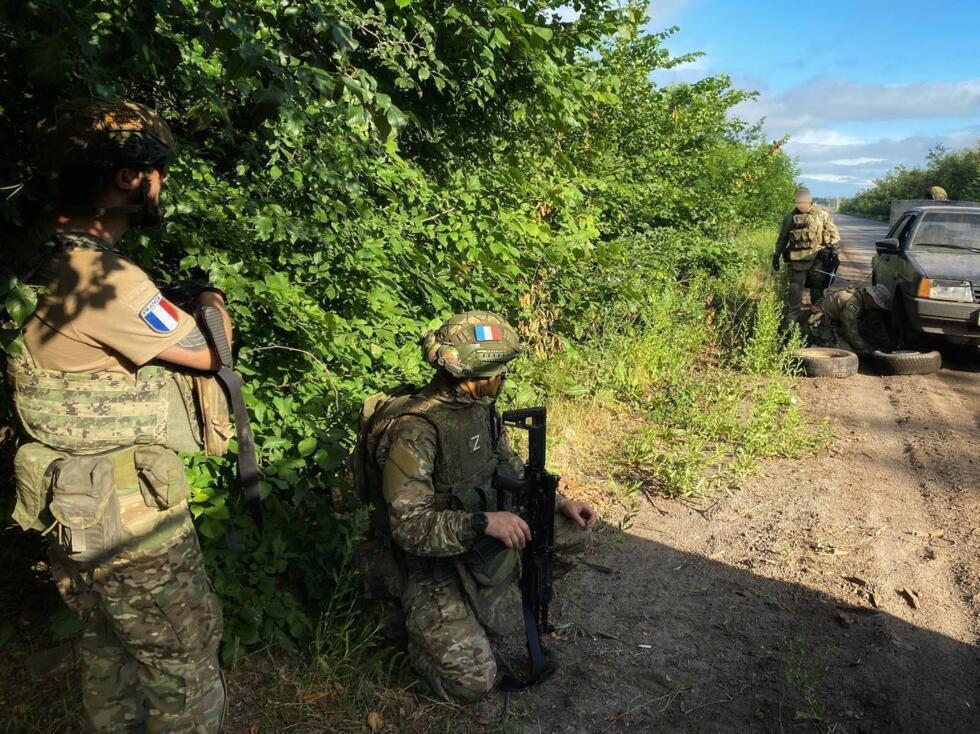
Since this announcement, the unit has continued to spread pro-Russian discourse. In May 2024, the unit created its own Telegram channel. A year later, the channel has 3,200 followers and the three men continue to publish near-daily updates in French. Often, their posts celebrate the death of Ukrainians killed by their drones. Other posts claim that there is widespread "forced conscription" in Ukraine or make fun of a video of former French Prime Minister François Bayrou struggling to get out of a Rafale plane at the Paris Air Show. Others comment on the “chaos in Paris” after Paris St. Germain football team won the Champions League.

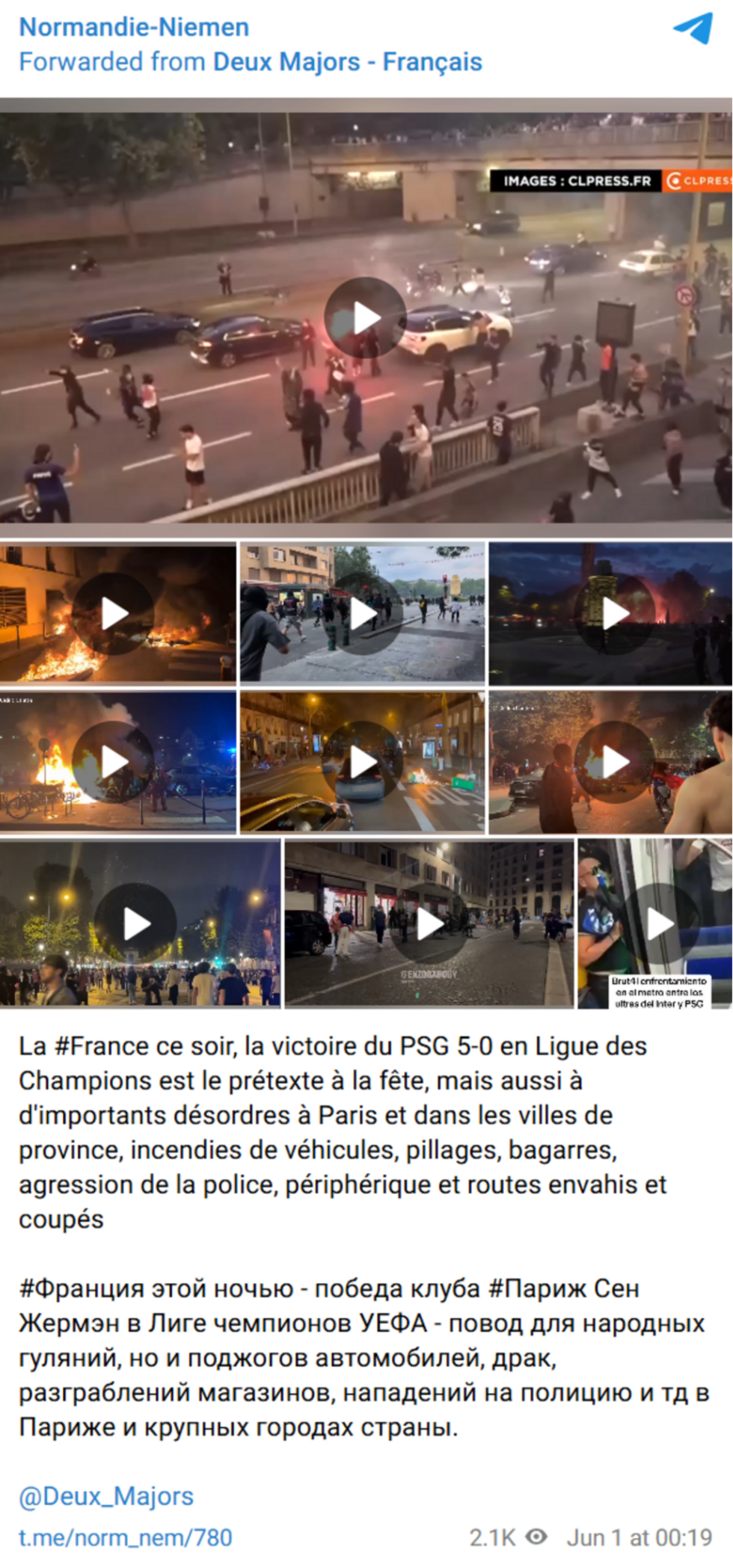
Links to French pro-Russian propaganda
Posts about the Normandie-Niemen unit have also been widely picked up and shared by French-language supporters of Russia. By our count, International Reporters has picked up and shared messages from the Normandie-Niemen Telegram account 159 times since June 2024.
And the links between the two channels don’t stop there. International Reporters did not respond to our request for an interview. However, a few days after we sent them our questions, Laurent Brayard, a Frenchman who describes himself as a "war correspondent" for International Reporters, posted a message on his Telegram account, which was then shared on the International Reporters channels.
It featured an image of the LinkedIn profile of our journalist who contacted him, calling them a “pure product of the system’s guard dogs”. It said that they did not want to respond to us, claiming that anything they shared with us would “end up on the desk of the French military intelligence services.”
The same message revealed details that our journalist had only shared with Munier.
The fact that Brayard had access to the information we shared with Munier is proof of, at a minimum, direct dialogue between one of the most important channels of pro-Russian propaganda in French and the Normandie-Niemen unit.
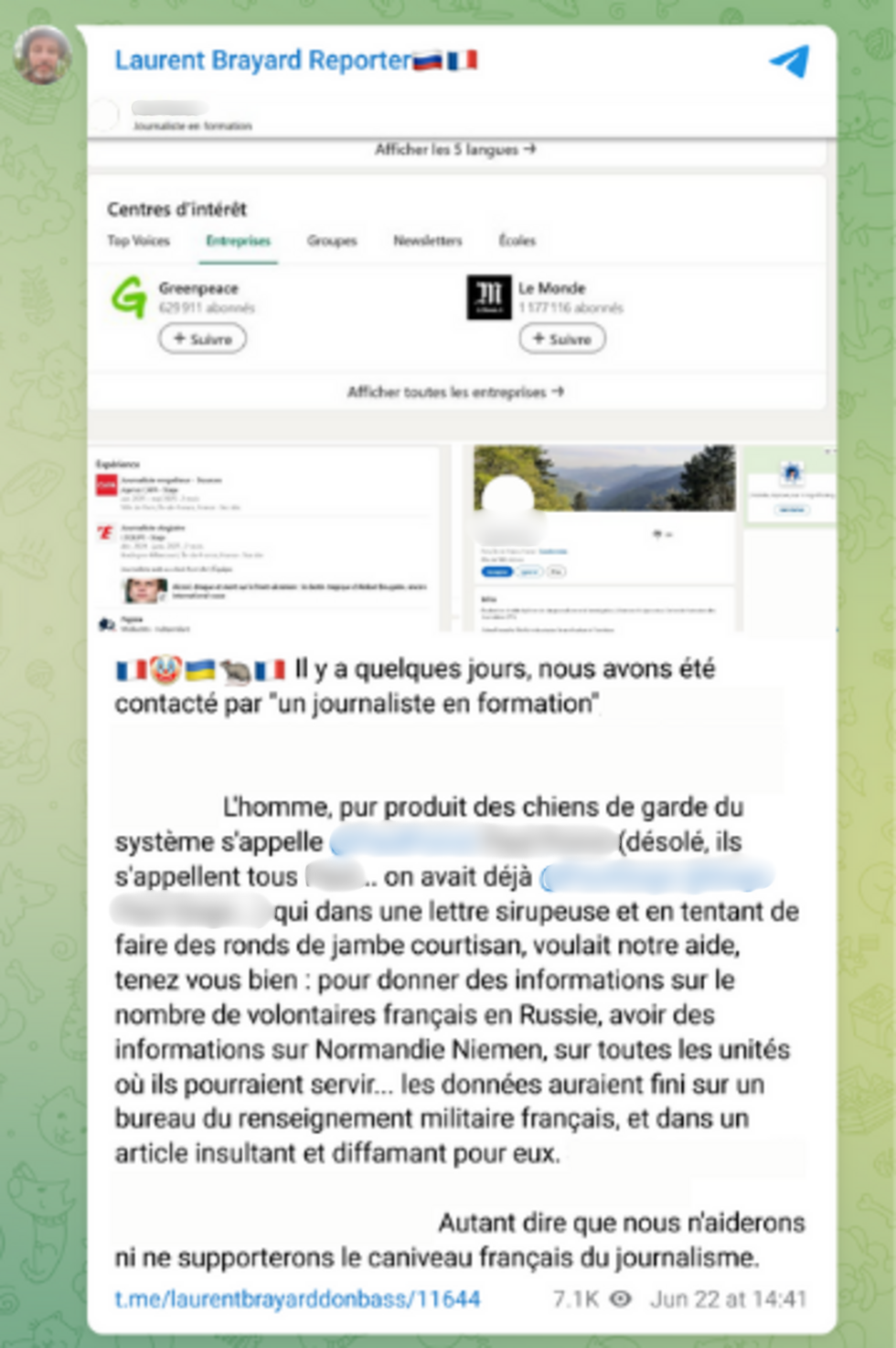
Russian media stars
Reports on the presence of French fighters on the Russian front have been a hit for Russian media outlets that share the Kremlin’s propaganda with Munier appearing on many different media outlets in recent years. In January 2023, journalist Kim Marina, who is close to Putin and now serves as a Russian deputy, posted a 15-minute video about Munier, whom she claims the “West calls Putin’s Frenchmen.” In April of the same year, Munier appeared in a TV report lasting nearly 50 minutes on Russian private channel NTV, alongside Gabriel Dorochine, a descendant of Czar Nicholas II, whose family immigrated to France.
Since the creation of the Normandie-Niemen unit, Munier has received even more coverage. He’s spoken to the weekly paper AiF, Russian news agency Tass, Russia Today, and even the National Society of Cossacks in Russia. The most notable press coveraege he obtained was a 35-minute report called "Normandie-Niemen, the return” broadcast in late April in a primetime slot on Russian public television channels Rossiya 1 and Rossiya 24.
Pro-Russian media outlets in France have also been sharing news about the Normandie-Niemen unit. The media outlet Omerta, which is often cited as having a pro-Putin bias, published a full report on Munier and his unit, called "Normandie-Niemen: Putin’s Frenchmen" in Aprl 2025. For 40 minutes, cameras follow Munier and a few soldiers from his unit on the Ukrainian frontlines. In July and August, the media outlet published individual interviews with Munier, "Gauthier", and "Padre", who was referred to in the piece as "Jean".
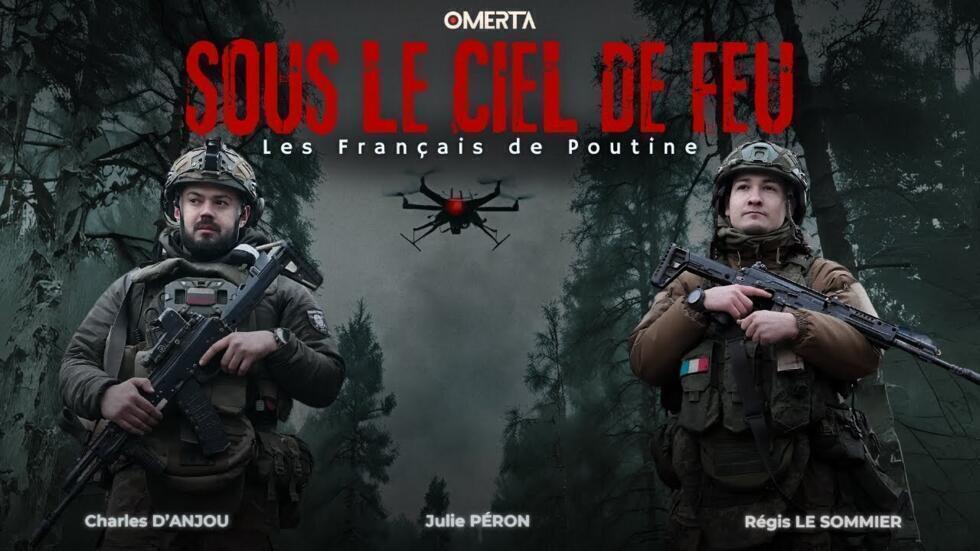
A smokescreen
This extensive media coverage makes it appear as if the French soldiers in the Normandie-Niemen unit are key actors in Ukraine, but he reality is very different.
A message posted on the unit's Telegram channel on April 24 mentions “numerous propositions to financially support the Normandie-Niemen unit". To facilitate this, the unit said they were setting up a fundraising page using cryptocurrency. However, four months after this post, the portfolio link shows that no one has donated.
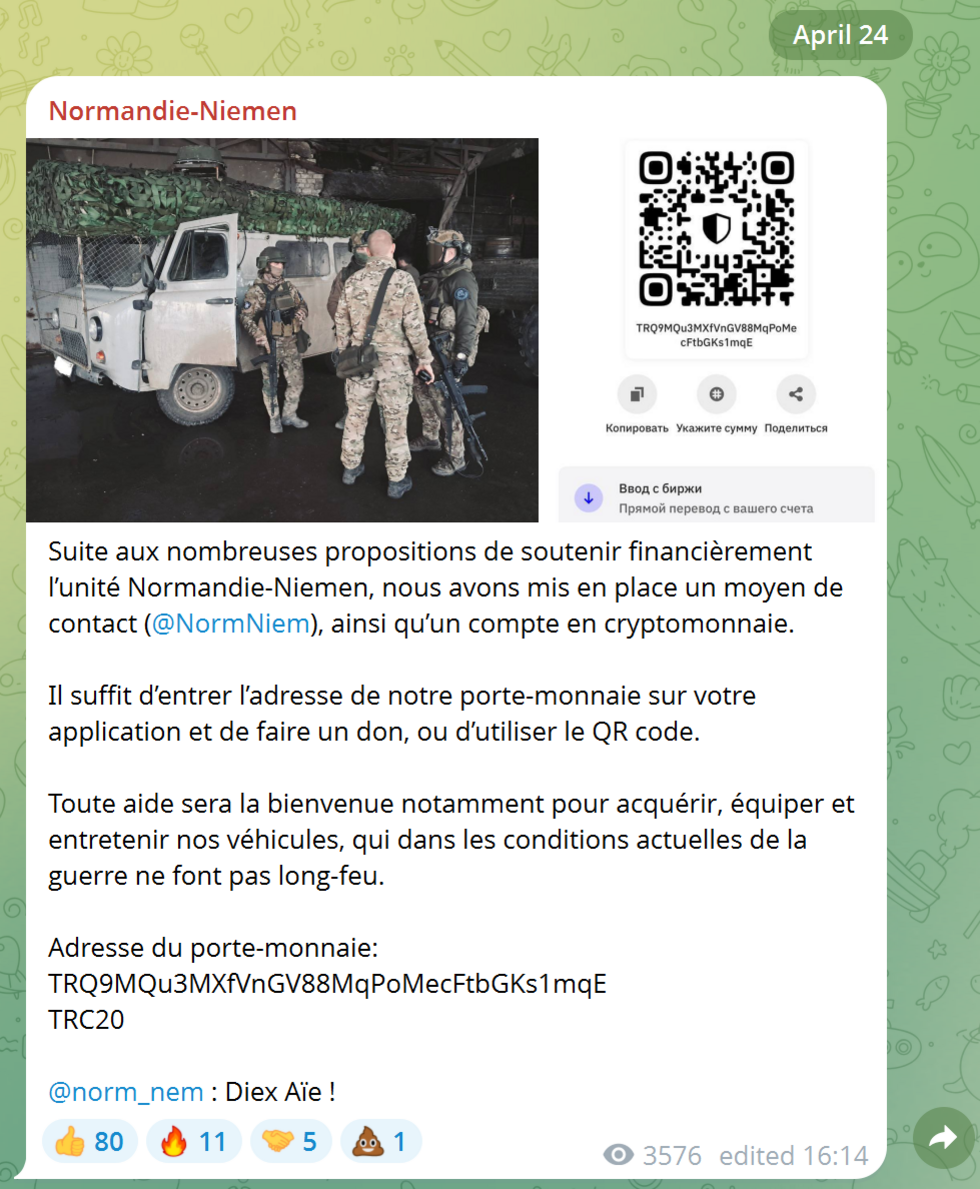
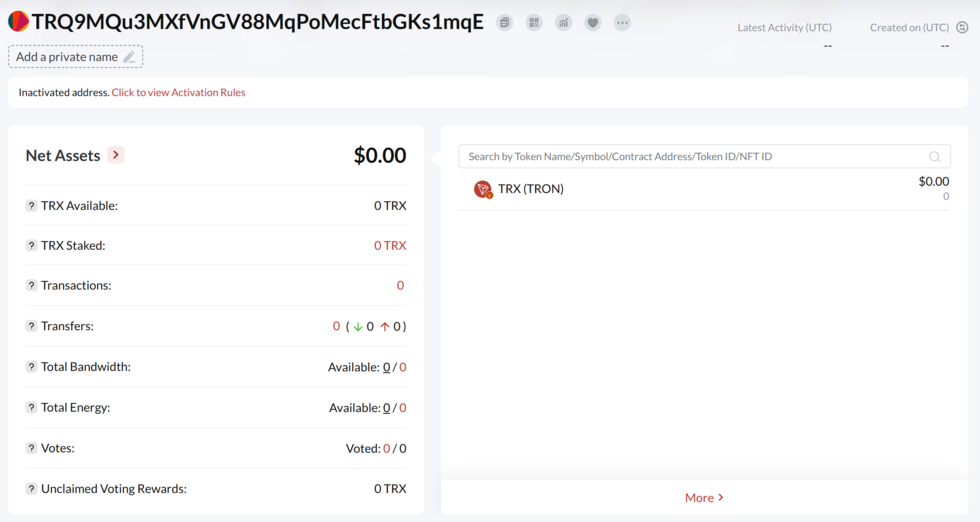
In a post on May 19, the unit claimed that it had received “dozens of requests to join the unit.” Munier claimed the same in an interview with the Russian agency Tass on June 3. However, there is no way to confirm his statements, and the most recent communications from the Normandie-Niemen unit only mention "Gauthier", "Padre," and Munier.
War of narratives
The imbalance between the intense media coverage of the unit and the limited presence of French fighters shows that the Normandie-Niemen unit is clearly more of a Russian propaganda tool than an actual force on the battlefield.
According to X account "L’œil du Kremlin" (Kremlin’s Eye) which closely follows Russian propaganda networks in France, the Normandie-Niemen name is a "well-known obsession of Russian propaganda”, which the Kremlin uses "to highlight a shared experience and blur the lines”.
Munier’s unit isn’t the first instance of this.
The Normandie-Niemen exhibit at the Air and Space Museum in Le Bourget, France was inaugurated in 2015 – a year after Russia invaded Crimea. Both the Russian bank Zenit and the petrol company Tatneft financed the exhibit, an arrangement organised by the Russian Embassy in France, according to museum communications.
The Normandie-Niemen statue, featuring two pilots from the WWII squadron, which now sits in front of the museum was gifted to France by Russia in September 2006 and inaugurated by Presidents Vladimir Putin and Jacques Chirac.
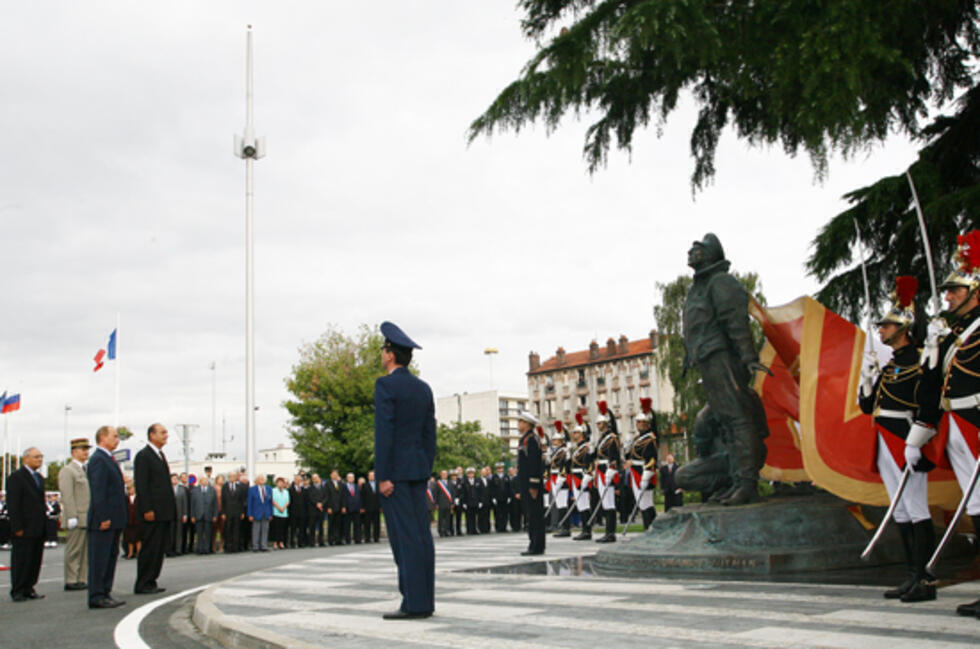
For Romain Mielcarek, a journalist and writer who specialises in Russian intelligence, "this unit has been used as a tool to link France and Russia”.
In his book "Les Moujiks: France in the claws of Russian spies”, Mielcarek says that the circles where the memory of the Normandie-Niemen unit is celebrated are "one of the most appreciated circles of Russian military intelligence in France”.
By invoking the “symbol” of the Normandie-Niemen unit in Russia, pro-Russian propagandists are also invoking the memory of World War II and the patriotic fervour that went along with it. And some people believe that the French will join Russia once again – not to fight Nazi Germany but, this time, Ukraine.


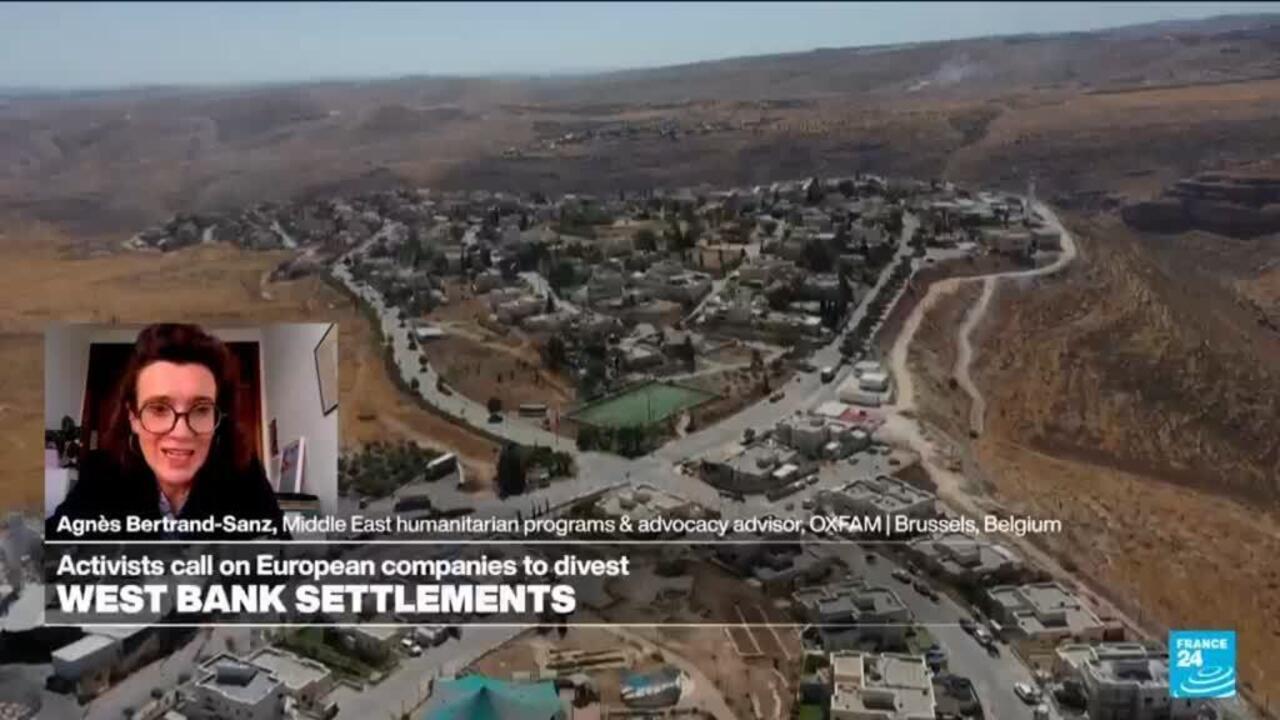







 English (US) ·
English (US) ·